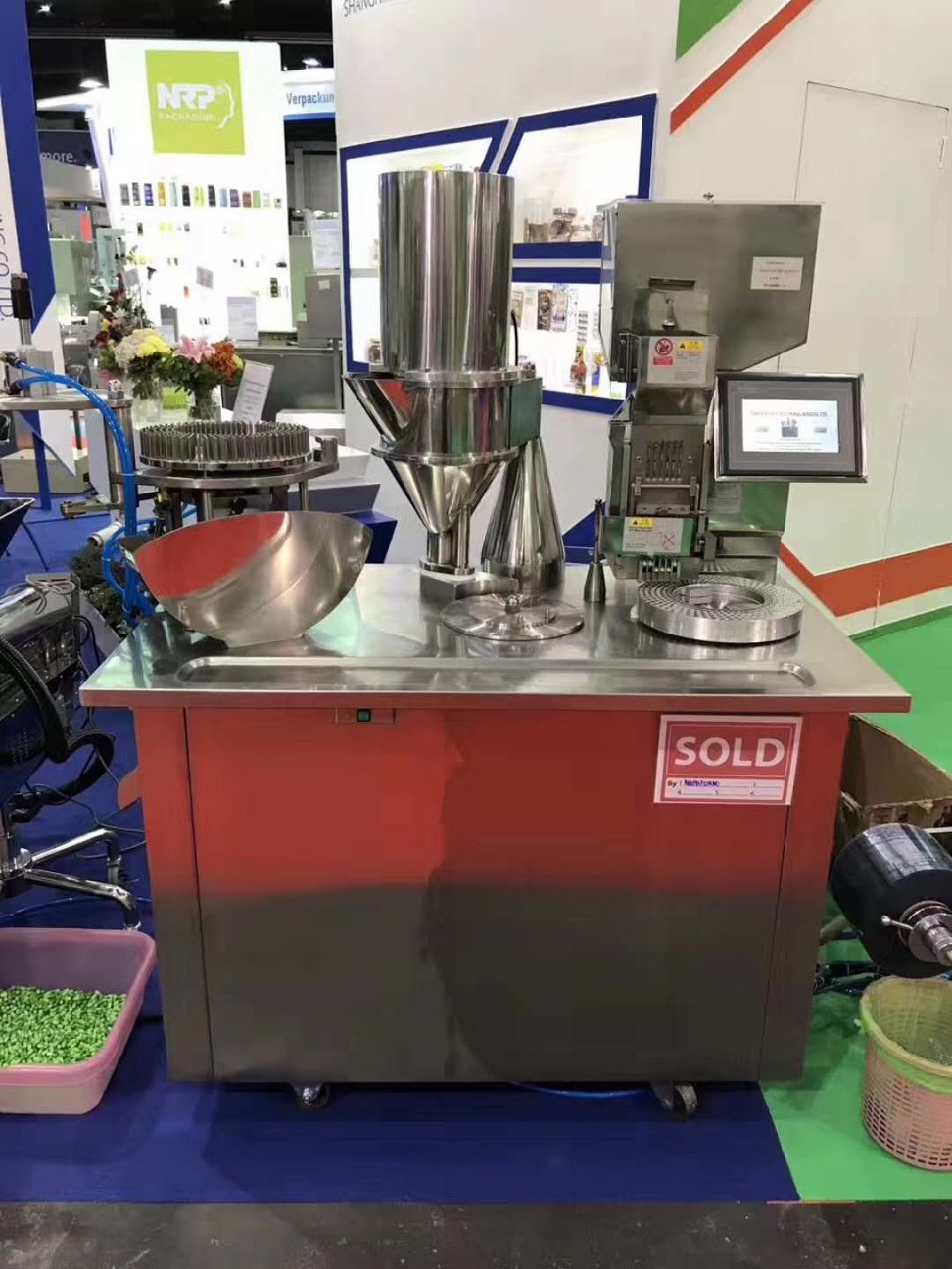 Â
 CGN208-D type capsule filling machine is a new efficient equipment based on DTJ-C model (old type) after research and development: easier more intuitive and higher loading in capsule dropping, U-turning, vacuum separation in comparison with the old type. The new type of capsule orientating adopts columns pill positioning design, which shortens the time in the replacement of mould from the original 30 minutes to 5-8 minutes. This machine is one type of electricity and pneumatic combined control, automatic counting electronics, programmable controller and frequency conversion speed regulating device. Instead of manual filling, it reduces labor intensity, which is the ideal equipment for capsule filling for small and medium-sized pharmaceutical companies, pharmaceutical research and development institutions and hospital preparation room.
Product Prameters
| Adjust new mould time: | 5-8 minutes (for beginner) |
| Production capacity: | 10000-25000 capsules/hour (depends on the capsule size) |
| Suitable capsule: | 000#,00L#,00#,0L#,0#,1#,2#,3#,4#,5# mechanical made standard capsule. |
| Filled material: | Powder (without wet or sticky); granules. |
| Total power: | 2.12KW |
| Compressed air: | 0.03m 3 /min, 0.7Mpa |
| Vacuum pump: | Exhaust 40m 3 /h |
| Overall dimension: | 1200*700*1650mm |
| Packing dimension: | 1650*800*1750mm |
| Gross Weight: | 420 KGS |
Inorganic acids, also known as mineral acids, are a general term for acids in inorganic compounds. Inorganic acids, in general, are inorganic compounds that can dissociate hydrogen ions. A compound consisting of hydrogen and a non-metallic element or a group thereof. For example, hydrochloric acid (HCl), nitric acid (HNO3), boric acid (H3BO3), sulfuric acid (H2SO4), carbonic acid (H2CO3), phosphoric acid (H3PO4) and the like.
According to the composition, inorganic acids can be divided into oxygen-containing acids, anaerobic acids, complex acids, mixed acids, superacids, etc., according to the degree of dissociation, can be divided into strong acids and weak acids, but also according to the number of hydrogen ions in the molecule can be ionized into monobasic acids, dibasic acids and polyacids.
Inorganic acids are mostly used to provide hydrogen ions.
Inorganic acids are divided into inorganic hydrogenic acids and inorganic oxygenated acids according to their composition.
The general formula of hydroic acid is MHm, the structure is relatively simple, it is some hydride of the periodic table, the group of elements. They are in an aqueous solution, can give protons, appear acidic.
For hydrogenic acid, the higher the electronegativity of its central atom M, the stronger the ability to attract electrons, the easier it is to give protons, and the stronger its acidity. For the same cycle, as the family of M changes, the electronegativity of M gradually increases in the sequence, and the acidity of its corresponding MHm is gradually enhanced.
Contains grade acids
The general formula for oxygenated acids is XOm(OH)n, where X is the central atom.
The structure of the oxygenated acid is more complex than that of the hydroacid, and its structure is related to the number of cycles in which the central atom X is located. In the second cycle, H3BO3,H2CO3, HNO3, and BO32-, CO32-,NO3- are planar structures that contain out-of-bound π bonds.
Inorganic Acid,Inoragnic Acid Chemicals,Acidity Chemicals,Acids Compound,Acids And Bases
WUHAN RUISUNNY CHEMICAL CO. LTD , https://www.ruisunny-chem.com